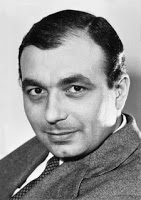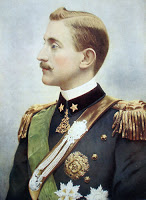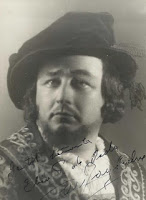Katia Ricciarelli - operatic soprano
Star whose peak years were in ‘70s and ‘80s
The opera singer Katia Ricciarelli, who at her peak was seen as soprano who combined a voice of sweet timbre with engaging stage presence, was born on this day in 1946 at Rovigo in the Veneto. She rose to fame quickly after making her professional debut as Mimi in Giacomo Puccini’s La Bohème in Mantua in 1969 and in the 1970s was in demand for the major soprano roles. Between 1972 and 1975, Ricciarelli sang at all the major European and American opera houses, including Lyric Opera of Chicago (1972), Teatro alla Scala in Milan (1973), the Royal Opera House, Covent Garden (1974) and the Metropolitan Opera (1975). In 1981, she began an association with the Rossini Opera Festival in Pesaro that she maintained throughout the ‘80s. In addition to her opera performances, Ricciarelli also appeared in a number of films. She was Desdemona in Franco Zeffirelli's film version of Giuseppe Verdi's Otello in 1986, alongside Plácido Domingo. In 2005 she won the best actress prize Nastro d'Argento, awarded by the Italian film journalists, for her role in Pupi Avati's La seconda notte di nozze (2005). During her peak years, Desdemona was one of her signature roles. Read more…
_________________________________________________________
Dino Meneghin – basketball player
Italy’s biggest star won 32 trophies and Olympic medal
Dino Meneghin, universally recognised as the greatest Italian player in basketball history, was born on this day in 1950 in Alano di Piave, a village in the Veneto. The first Italian and only the second European player to be drafted by a National Basketball Association team when he was picked by the Atlanta Hawks in 1970, Meneghin enjoyed a professional career spanning 28 years. He did not retire until he was 44 years old and had played in a professional match against his own son, Andrea, having won 32 trophies including 12 Italian national championships and seven EuroLeague titles. Meneghin also participated in four Olympic basketball tournaments, winning a silver medal in the 1980 Games in Moscow. His international career amounted to 271 appearances for Italy, in which he scored 2,847 points. Brought up in Varese in Lombardy, Meneghin was always exceptionally tall, growing to a height of 6ft 9ins (2.06m), and was earmarked for an athletic career. He and his brother Renzo would train together, Renzo as a middle-distance runner, Dino as a shot-putter and discus thrower. Read more…
___________________________________________________
Alfredo Ildefonso Schuster – Cardinal
Blessed monk who tried to preach humility to Mussolini
Alfredo Ildefonso Schuster, who was a Benedictine monk and served as Cardinal and Archbishop of Milan during World War II, was born on this day in 1880 in Rome. Towards the end of the war, Schuster attempted to arrange a truce between Mussolini and the partisans, but failed because Mussolini refused to accept the demands for total surrender made by the partisan delegates. During the unsuccessful meeting between Mussolini and the partisans in the Archbishop’s Palace in Milan, Schuster is reported to have made an attempt to preach humility to the Fascist leader. More than 40 years after his death, Cardinal Schuster was beatified on 12 May 1996 by Pope John Paul II. Schuster was the son of a Bavarian tailor who had moved to live in Rome and he served as an altar boy at a German Church near St Peter’s Basilica. In 1898 he joined the Order of Saint Benedict and took the name Ildefonso before entering the monastic community of Saint Paul Outside the Walls. He studied while he was a monk and graduated as a Doctor of Philosophy in 1903, later receiving a Doctorate in Theology. Read more…
_______________________________________________________
Alfonso Ferrabosco the elder – musician
Court composer suspected of being a spy
Alfonso Ferrabosco, the composer who first introduced the madrigal to England, was born on this day in Bologna in 1543. As well as composing music for Queen Elizabeth I of England, he was also suspected of working as a spy for her. Ferrabosco had been born into a family of musicians and travelled about in Italy and France while he was young with his father and uncle. He went to England in 1562 with his uncle and found employment with Elizabeth I, becoming the first composer to introduce the unaccompanied harmony of the madrigal to England, where it later became very popular. Elizabeth is said to have settled an annuity equivalent to £66 on him. Ferrabosco’s madrigals suited English tastes and were considered very skilful. He also composed sacred music and instrumental music for lutes and viols. He made periodic trips back to Italy, but these were frowned upon both by the Pope and the Inquisition. England was at war with several Roman Catholic countries at the time and as a result, Ferrabosco lost his Italian inheritance. At one point he was serving Cardinal Farnese in Rome, but decided he wanted to return to England. Read more…






























